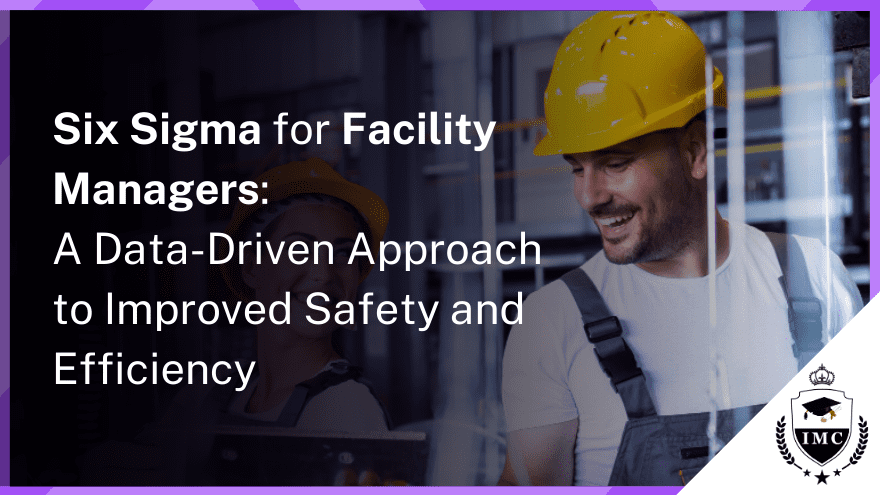Facility management is a critical function for any organization, involving the oversight of daily operations and maintenance of buildings and infrastructure. As facilities grow in size and complexity, so do the risks and challenges involved in keeping them running safely and efficiently. This is where Six Sigma principles and techniques can make a major difference. Six Sigma is a data-driven approach to quality improvement that focuses on reducing variability and defects. It provides a rigorous methodology for identifying and eliminating sources of errors and minimizing risk. Implementing Six Sigma in facility management can lead to significant improvements in safety, compliance, cost savings, and more. In this article, we will discuss how Six Sigma techniques can help facility managers address major risks, reduce safety incidents, and improve the overall performance of their facilities.
What is Six Sigma?
Six Sigma is a data-driven quality improvement methodology that uses statistical methods to identify and eliminate defects in any process. It was developed by Motorola in the 1980s and has since been adopted by many organizations around the world.
The benefits of Six Sigma for facility management
There are many benefits to using Six Sigma in facility management, including:
Reduced costs: Six Sigma can help facility managers reduce costs by identifying and eliminating waste in their processes. This can lead to savings on energy, materials, and labor.
Improved efficiency: Six Sigma can help facility managers improve the efficiency of their processes by identifying and eliminating bottlenecks. This can lead to faster turnaround times and improved productivity.
Reduced errors: Six Sigma can help facility managers reduce errors in their processes. This can lead to fewer accidents, injuries, and property damage.
Improved safety: Six Sigma can help facility managers improve the safety of their facilities by identifying and eliminating potential hazards. This can lead to a safer work environment for employees and occupants.
How to implement Six Sigma in facility management
- There are five steps to implementing Six Sigma in facility management:
- Define: Define the problem or opportunity that you want to address.
- Measure: Collect data on the current state of the process.
- Analyze: Analyze the data to identify the root causes of the problem.
- Improve: Implement changes to the process to address the root causes.
- Control: Monitor the process to ensure that the improvements are sustained.
Six Sigma certifications for facility managers
There are a number of Six Sigma certifications available for facility managers. The most common certifications are:
Six Sigma Green Belt: This certification is designed for individuals who want to learn the basics of Six Sigma and how to apply it to their jobs.
Six Sigma Black Belt: This certification is designed for individuals who want to lead Six Sigma projects and initiatives.
Six Sigma Master Black Belt: This certification is designed for individuals who want to coach and mentor others on Six Sigma.
Reducing Safety Incidents through Process Improvement
Safety is a top priority for any facility manager. From preventing slips and falls to managing hazardous materials, there are many complex processes involved in keeping occupants safe. Six Sigma provides a framework for analyzing these processes, identifying opportunities for improvement, and reducing safety incidents.
A key technique is mapping out critical processes and measuring relevant metrics. For example, tracking incidents of falls or injuries over time can reveal problem areas. Facilities can then drill down to root causes using methods like the 5 Whys approach. Asking “why” questions gets to the source of problems so they can be addressed.
Process mapping also helps streamline protocols and procedures to reduce human error. Checklists, training programs, and technology tools can then be developed to support improved processes. With quantified metrics, facilities can track direct reductions in safety incidents after Six Sigma-inspired process refinements.
Managing Compliance Risks
Regulatory compliance is another major area of risk, with facilities having to adhere to codes and standards for safety, accessibility, environmental impact, and much more. Non-compliance can result in major fines, lawsuits, and damage to an organization’s reputation.
Six Sigma helps manage these risks by integrating compliance into management systems and ensuring rigorous adherence to regulations. This involves first understanding all applicable codes and regulations at the federal, state, and local levels. Compliance requirements can then be built into process design and tracked through metrics and dashboards.
With this focus on compliance processes through Six Sigma, facilities can spot any issues or gaps proactively. Problems can be addressed quickly through root cause analysis and corrective actions.
Reducing Costs and Improving Efficiency
In addition to improving safety and compliance, Six Sigma also aims to maximize efficiency and reduce waste. For facility managers, this provides significant potential cost savings.
Applying Six Sigma to examine maintenance processes helps identify causes of schedule delays, equipment downtime, and repeated repairs. Preventative maintenance programs can then be optimized to fix problems before they arise. Detailed documentation and analysis of work orders can also uncover inefficient use of labor resources.
Energy consumption is another area where Six Sigma tools like statistical analysis and experiment design (DOE) can help reduce utility costs. Data analytics helps facilities identify opportunities for efficiency upgrades and control system adjustments to cut energy waste. With layered benefits across safety, compliance, and costs, Six Sigma delivers major advantages for facility management professionals looking to improve overall performance.
Integrating Six Sigma into Facility Management
Implementing Six Sigma involves change management and training to integrate it successfully into an organization. While a full-scale adoption requires significant commitment, facilities can start small with high-impact projects. Many resources are available, including online learning, certifications, and consulting help.
As a data-driven methodology, Six Sigma fits well with smart building technologies utilized in modern facilities. IoT sensors, building automation systems, and energy management platforms generate abundant data that Six Sigma professionals can analyze for deeper insights.
Finally, facilities should use Six Sigma to enhance collaboration across teams like maintenance, safety, compliance, procurement, and management. Breaking down silos leads to better information sharing and a unified focus on continuous improvement.
Summary
The blog post explains how Six Sigma, a data-driven quality improvement methodology focused on reducing defects, can significantly benefit facility management across major areas like safety, compliance, costs, and efficiency; it provides background on Six Sigma and outlines a 5-step approach for implementation including defining the problem, measuring current performance, analyzing data to find root causes, improving the process by addressing root causes, and controlling the improved process; key areas of facility management where Six Sigma can drive gains are reducing safety incidents through techniques like process mapping, metrics tracking, root cause analysis, and process refinement, managing compliance risks by integrating regulations into processes and tracking adherence, and cutting costs/improving efficiency in maintenance, energy use, labor utilization, etc. through detailed analysis and optimization; the post discusses integrating Six Sigma through change management, starting with high-impact projects, leveraging building data, and enhancing team collaboration, emphasizing that partnering with Six Sigma experts and using analytics can allow facility managers to achieve significant improvements in occupant safety, regulatory compliance, cost efficiency, and overall performance as facilities become more complex.






